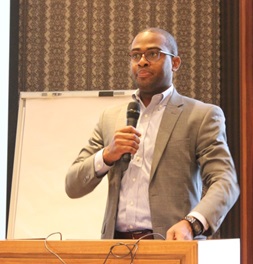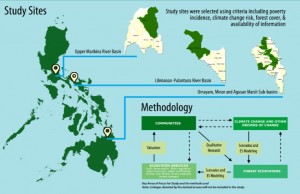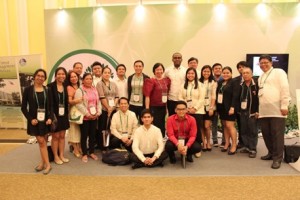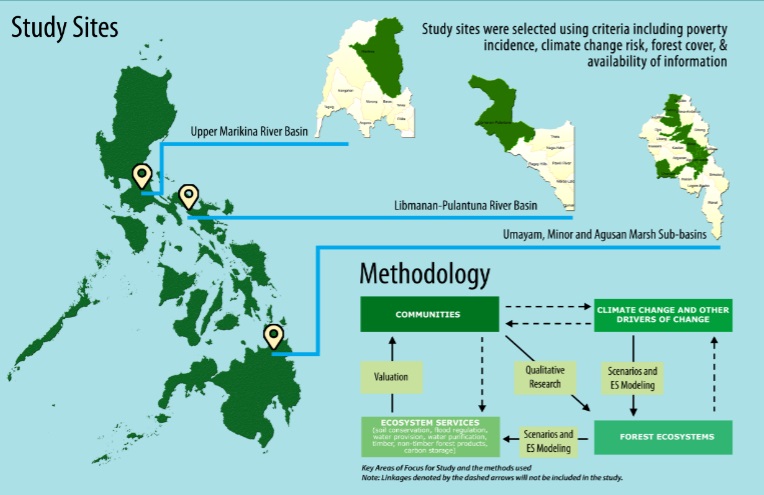Being part of a graduate program that is so interdisciplinary in nature requires one to wear many hats. One has to be flexible and creative enough to be compelling, yet subtle, in order to provide thought provoking insights in a manner that is appropriate to your audience. These qualities are also essential when addressing issues centered on Climate Resiliency (CR) and Natural Resource Management (NRM). The complex nature of these issues requires a multidisciplinary approach to reduce vulnerability and promote sustainable development in the countries that will be most impacted from climate change.
Adopting this multidisciplinary approach can be onerous at times, especially when dealing with the level of stakeholder engagement required in successful CR and NRM projects. Given these various moving parts, a good leader is able to communicate with all audiences regardless of level of expertise and opinion, manage project expectations and outcomes, and represent the inputs of all stakeholders in the final policy or legislation being considered.

I was fortunate enough to meet one of these leaders, Dr. Maurice Rawlins, in July 2015 in Washington D.C. Maurice is a Natural Resource Management Specialist at the World Bank and technical team leader for the project titled “Assessing the roles of forests in reducing poverty and enhancing climate resilience in the Philippines.”
The Philippines has succumbed to a series of environmental challenges that include declining biodiversity, water availability, and water quality, frequent flooding, reduced lake and river storage capacity, increased salt water intrusion and sedimentation in waterways, and soil erosion.
Consequently, the Philippines was selected as a site to build capacity in-country to be able to undertake these and future assessments around CR and NRM. Maurice’s experience working on these issues in developing countries gives him valuable insights into the kind of leadership required to steer this kind of challenging, multidisciplinary project.
Who are some of the stakeholders in your team and what are some of the specific work your team is responsible for?

Maurice explained that this 18-month project has multiple stakeholders and is being implemented by the World Bank in partnership with PROFOR, the Forest Management Bureau under the Department of Natural Resources Management of the Philippines, the River Basin Commission in the Philippines, the National Economic Development Agency, and universities and community groups within the study sites.
Specifically, Maurice leads a technical team of 4 consultants who support 4 key areas of the project–forest use analysis, ecosystem service modelling, valuation of ecosystem services, and scenario development–to provide recommendations for policy and support the government’s Risk Resiliency Program (RRP). Since the Bank is also interested in capacity building, Maurice’s team provides training to the government, which in turn helps it support the project through data collection and analysis.
What are some of the skills or characteristics that you think makes you a good leader in your organization and on this project?
Dr. Rawlins noted that as a youth he admired impactful leaders who were “always able to adopt a learning attitude,” a quality that promised to emulate if he ever assumed a leadership role. Currently, as a team leader on this project, Maurice remarked that he does not put himself above the ability to learn from others, even from those people he supervises. He believes that when leaders do that it allows them to be more open and honest with the people they are leading and ensures that the lines of communication will always be open. This characteristic also fosters better team dynamics between leaders and staff and makes people develop a greater connection to a project through these active dialogues as opposed to being ordered to meet deadlines with limited input.
What are some of the biggest challenges you’ve faced in leading this project?
Maurice noted that “a challenge is not necessarily a bad thing, but it’s another opportunity to learn lessons that may not have been presented to you under normal circumstances.” Maurice explained that the management of a team of consultants and ensuring that they meet their deliverables is not always a smooth process when the quality of the output is below what was expected. However, he intimated that on occasions like this require some stringent tactics and that effective leaders need to not only make quick judgments to keep a project on course but also need to have an understanding of the amount of stringency that is needed to improve the final product. Sometimes finding that balance can still be a challenge even for him.
Are you doing anything to ensure you continue to grow and develop as a leader?

Being part of a professional network such as the World Bank, Maurice has been fortunate enough to attend several training courses and workshops on building leadership capacity. He is also part of the Bank’s mentorship program, which partners more seasoned professional leaders with upcoming leaders like him to share expertise and lessons learned in Bank-funded initiatives. Additionally, he always makes sure to seek appropriate feedback from his team and is willing to make adjustments to his leadership style where applicable.

